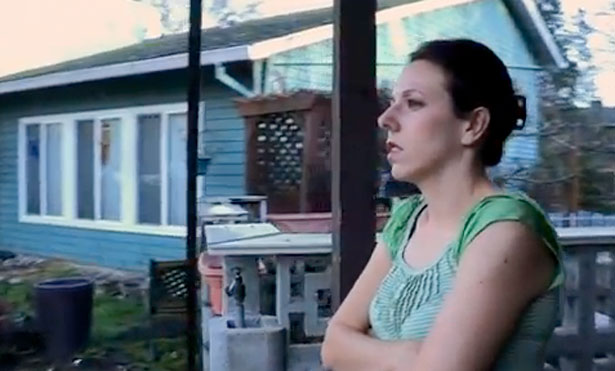
A scene from American Winter. (Credit: americanwinterfilm.com)
“Unemployment at 4-Year Low as U.S. Hiring Gains Steam,” headlined The New York Times last Friday as I sat down with the makers of American Winter, a documentary that premieres tonight on HBO. The statistics suggest employment is up and joblessness is down. Watch American Winter, though, and you get a mountain of reasons to take a skeptical look at those numbers.
American Winter follows the personal stories of eight families struggling in the winter of 2011–12 in Portland. (You can watch my conversation with the Emmy Award–winning filmmakers, Joe and Harry Gantz, at GRITtv.) Oregon isn’t the worst place for public services and these aren’t the worst stories in the land, but they are representative. After months without work, teetering on homelessness and hunger, several of the people in the film eventually find jobs, but the jobs pay less (in one case, a man’s wage drops from $22 to $12/hour), the employment is part time and at least one worker (a trained medical technician) has to start gathering scrap metal to make ends half-way meet. And that is just what’s happening beneath the headlines.
The fact is, the same Department of Labor surveys that show that the economy has been adding jobs also show an increase in part-time work, an increase in people holding multiple jobs and only the slightest uptick in pay.
As economics reporter Catherine Rampell reports, “Compared with December 2007, when the recession officially began, there are 5.8 million fewer Americans working full time. In that same period, there has been an increase of 2.8 million working part time.” The share of workers with part-time jobs has risen from 16.9 to 19.2 percent, and so has the proportion that would rather be working more.
If employment were truly up, labor force participation should be headed in the same direction. In fact, the proportion of the adult population officially employed stands unchanged, at a dismal low of 58.6 percent. Here’s a graph from Bloomberg:

Are more people simply holding more jobs? The figures suggest so—in February, for example, the number of multiple jobholders was up by 340,000 to 7.26 million, more than the department’s much ballyhooed number of 236,000 jobs created. How many of the new jobs were second or third ones? And how do we arrive at those unemployment numbers anyway? The Labor Department reports that 130,000 people left the labor force during February. That is, they are no longer counted as unemployed, thus shrinking the pool.
So neither the job creation nor the unemployment numbers are as cheering as they first appear. You can slog through the analysis that contradicts the headlines, or you can watch American Winter for a check on reality.
As the Emmy Award–winning filmmakers Joe and Harry Gantz warn, with stimulus spending behind us, and with $80 billion in federal sequester cuts ahead, the human consequences of cuts to social services, the decline of the middle class and the fracturing of the American Dream have only just begun to show. Premiering tonight, American Winter airs all month on HBO. If you’d like to help the Gantz brothers distribute this film as part of a movement for change, you can, at Kickstarter.
How to improve wages and hours? One answer: unionize, as research assistants at Oregon State University did this past week. Read more in The Nation’s “Dispatches from the US Student Movement.”


